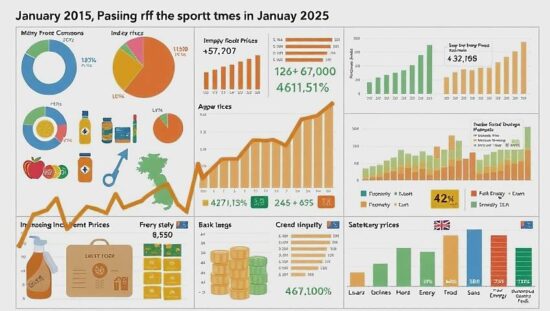Import prices in January 2025 were 3.1 percent higher than in January 2024, the largest increase since February 2023, which also saw a 3.1 percent rise. In December 2024, the change in prices compared to the previous year was 2.0 percent and in November 2024, it was 0.6 percent. According to the Federal Statistical Office, prices for imported goods increased by 1.1 percent in January 2025 compared to December 2024.
Export prices in January 2025 were 2.4 percent higher than in January 2024, the largest increase since March 2023, which saw a 3.3 percent rise. In December 2024, the change in prices compared to the previous year was 1.8 percent and in November 2024, it was 1.2 percent. Compared to December 2024, export prices increased by 0.7 percent.
The largest influence on the overall development of import prices in January 2025 was the increase in prices for consumer goods, which rose by 4.5 percent compared to the previous year and by 1.1 percent compared to December 2024. Prices for imported consumer goods were 5.2 percent higher than in January 2024, with food prices increasing by 11.2 percent and prices for sweets, orange juice, apple juice, poultry and milk and dairy products rising by 70.7 percent, 38.2 percent, 34.4 percent, 25.7 percent and 13.5 percent, respectively.
Prices for imported agricultural goods were 12.0 percent higher than in January 2024, with a 4.9 percent increase compared to December 2024. Cocoa, in particular, was much more expensive, with a 129.0 percent increase and coffee was 64.6 percent more expensive, with a 15.3 percent increase compared to December 2024.
Energy imports were 6.2 percent more expensive in January 2025 than in January 2024, with a 4.1 percent increase compared to December 2024. The prices for electricity and natural gas increased by 51.2 percent and 18.4 percent, respectively, compared to January 2024 and by 4.5 percent and 2.6 percent, respectively, compared to December 2024.
On the other hand, coal, mineral oil products and crude oil were less expensive in January 2025 than in January 2024, with decreases of 12.4 percent, 1.3 percent and 0.7 percent, respectively. Coal was 0.6 percent cheaper in January 2025 than in December 2024, while mineral oil products and crude oil were 5.2 percent and 5.9 percent more expensive, respectively, compared to December 2024.
Without considering energy prices, import prices in January 2025 were 2.8 percent higher than in January 2024 and 0.8 percent higher than in December 2024. Excluding coal and mineral oil products, the import price index was 3.4 percent higher than in January 2024 and 0.9 percent higher than in December 2024.
Prices for intermediate goods, which account for the largest share of imports, were 2.5 percent higher in January 2025 than in January 2024, with a 0.6 percent increase compared to December 2024. The prices for investment goods, which account for a smaller share of imports, were 0.6 percent higher in January 2025 than in January 2024, with a 0.4 percent increase compared to December 2024.
Export prices for intermediate and investment goods, which account for the largest share of exports, increased by 1.8 percent and 1.7 percent, respectively, in January 2025 compared to January 2024 and by 0.6 percent and 0.6 percent, respectively, compared to December 2024. The prices for exported agricultural goods, which account for a smaller share of exports, were 5.3 percent higher in January 2025 than in January 2024, with a 2.5 percent increase compared to December 2024.
Energy exports were 12.4 percent more expensive in January 2025 than in January 2024 and 4.9 percent more expensive in January 2025 than in December 2024, with electricity and natural gas prices increasing by 51.2 percent and 24.0 percent, respectively, compared to January 2024 and by 4.5 percent and 6.0 percent, respectively, compared to December 2024. Mineral oil products, on the other hand, were less expensive in January 2025 than in January 2024, with a 2.8 percent decrease, but more expensive in January 2025 than in December 2024, with a 4.2 percent increase, according to the Federal Statistical Office.





